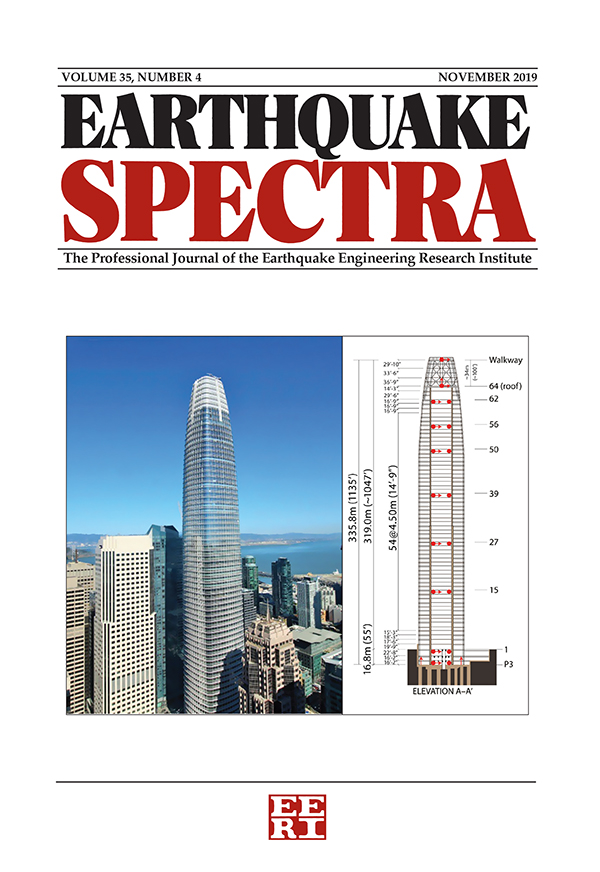利用 EQSIM 框架进行区域尺度断层-结构地震模拟:GPU 加速的超大规模平台上的工作流程成熟度和计算性能
IF 3.7
2区 工程技术
Q2 ENGINEERING, CIVIL
引用次数: 0
摘要
对地震现象的科学和工程理解的不断进步,加上基于物理的代表性模型的相关开发,为高性能的断层到结构地震模拟提供了基础。然而,由于工程风险评估所需分辨率的计算要求,高性能模型的区域级应用一直面临挑战。EarthQuake SIMulation(EQSIM)框架是美国能源部(DOE)超大规模计算项目下的一个软件应用开发项目,其重点是克服现有的计算障碍,以与各种工程系统相关的分辨率进行常规区域尺度模拟。这项多学科软件开发利用了地球物理学、工程学、应用数学和计算机科学方面的专业知识,正在准备必要的先进计算工作流程,以充分利用将于2023年至2024年上线的能源部exaflop计算机平台。要实现包含数千亿到数万亿个网格点的高分辨率区域模型所需的计算性能,就必须在区域模拟的每个阶段提高数值效率。这包括运行时间启动和区域模型生成、计算工作量在成千上万个计算机节点上的有效分配、区域地球物理和本地工程模型的高效耦合,以及根据应用定制的大量模拟数据的高效传输、存储和查询。本文总结了 EQSIM 集成断层到结构框架工作流程设计的最新进展和改进,这些进展和改进是基于在多个图形处理器 (GPU) 加速平台上进行的大量数值测试,并通过对美国加利福尼亚州旧金山湾区的代表性区域尺度地震模拟,展示了在世界首个 exaflop 计算机平台上实现的计算性能。本文章由计算机程序翻译,如有差异,请以英文原文为准。
Regional-scale fault-to-structure earthquake simulations with the EQSIM framework: Workflow maturation and computational performance on GPU-accelerated exascale platforms
Continuous advancements in scientific and engineering understanding of earthquake phenomena, combined with the associated development of representative physics-based models, is providing a foundation for high-performance, fault-to-structure earthquake simulations. However, regional-scale applications of high-performance models have been challenged by the computational requirements at the resolutions required for engineering risk assessments. The EarthQuake SIMulation (EQSIM) framework, a software application development under the US Department of Energy (DOE) Exascale Computing Project, is focused on overcoming the existing computational barriers and enabling routine regional-scale simulations at resolutions relevant to a breadth of engineered systems. This multidisciplinary software development—drawing upon expertise in geophysics, engineering, applied math and computer science—is preparing the advanced computational workflow necessary to fully exploit the DOE’s exaflop computer platforms coming online in the 2023 to 2024 timeframe. Achievement of the computational performance required for high-resolution regional models containing upward of hundreds of billions to trillions of model grid points requires numerical efficiency in every phase of a regional simulation. This includes run time start-up and regional model generation, effective distribution of the computational workload across thousands of computer nodes, efficient coupling of regional geophysics and local engineering models, and application-tailored highly efficient transfer, storage, and interrogation of very large volumes of simulation data. This article summarizes the most recent advancements and refinements incorporated in the workflow design for the EQSIM integrated fault-to-structure framework, which are based on extensive numerical testing across multiple graphics processing unit (GPU)-accelerated platforms, and demonstrates the computational performance achieved on the world’s first exaflop computer platform through representative regional-scale earthquake simulations for the San Francisco Bay Area in California, USA.
求助全文
通过发布文献求助,成功后即可免费获取论文全文。
去求助
来源期刊

Earthquake Spectra
工程技术-工程:地质
CiteScore
8.40
自引率
12.00%
发文量
88
审稿时长
6-12 weeks
期刊介绍:
Earthquake Spectra, the professional peer-reviewed journal of the Earthquake Engineering Research Institute (EERI), serves as the publication of record for the development of earthquake engineering practice, earthquake codes and regulations, earthquake public policy, and earthquake investigation reports. The journal is published quarterly in both printed and online editions in February, May, August, and November, with additional special edition issues.
EERI established Earthquake Spectra with the purpose of improving the practice of earthquake hazards mitigation, preparedness, and recovery — serving the informational needs of the diverse professionals engaged in earthquake risk reduction: civil, geotechnical, mechanical, and structural engineers; geologists, seismologists, and other earth scientists; architects and city planners; public officials; social scientists; and researchers.
 求助内容:
求助内容: 应助结果提醒方式:
应助结果提醒方式:


